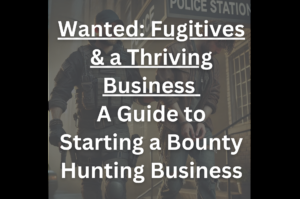**Disclosure:** We believe in honesty and transparency to the fullest extent. Some of the links on this blog are affiliate links, meaning, at no additional cost to you, we will earn a commission if you click through and make a purchase. This is one of the simplest ways you can support us.
Unlocking the Potential of Your SaaS Venture
Are you an aspiring entrepreneur with a passion for software and a drive to solve real problems? If you answered with a resounding yes, then you might be on the hunt for the perfect Software as a Service (SaaS) idea. Finding your niche in the SaaS industry is not just about creating a product; it’s about identifying a problem that needs solving and crafting a solution that resonates with your target audience. In this article, we’ll guide you through the process of market research techniques, identifying customer pain points, and evaluating competition to find a viable and marketable SaaS idea.
1. Start with Market Research:
Step into the Shoes of Your Potential Customers
Market research is the foundation of any successful business venture. It helps you understand your target market, their needs, and the challenges they face. To start, you need to identify your potential customer base. This could be individuals, businesses, or specific industries. Consider creating buyer personas to represent the different segments of your target audience. This will allow you to tailor your SaaS solution to their specific needs and pain points.
Here are some effective market research techniques to explore:
Surveys and Interviews: Conduct surveys or interviews with potential customers to gather insights into their pain points, preferences, and behaviors. Use tools like Google Forms, SurveyMonkey, or even social media polls to collect data.
Online Communities and Forums: Engage in online forums and communities related to your target industry. Listen to the conversations, problems, and needs discussed by users.
Competitor Analysis: Study your competitors closely. Look at their strengths, weaknesses, and the gaps they have left in the market. This can reveal opportunities for you to offer a differentiated product.
2. Identifying Customer Pain Points:
Solve a Problem, and You’ve Solved a Business
Once you have a good understanding of your target market, the next step is to identify their pain points. Pain points are the specific problems or issues that your potential customers are facing. Solving these problems can be the key to a successful SaaS business. To identify pain points, consider the following:
Customer Interactions: Engage with your potential customers directly. Understand their challenges, frustrations, and daily operations. The more you know, the better equipped you will be to develop a solution that addresses their specific needs.
Online Research: Search for customer reviews, feedback, and comments related to products or services in your target market. These can be goldmines of information about pain points.
Evaluate Competitors and Find a Viable Niche
Now that you have a good understanding of your potential customers and their pain points, it’s time to evaluate the competition. This step is crucial in finding a niche for your SaaS idea.
Assess Competitors and Gaps in the Market
Study your competitors closely. Analyze their features, pricing, target audience, and marketing strategies. Identify their strengths and weaknesses. Look for gaps in the market that you can exploit with your SaaS solution. A great way to do this is by using a technique called a competitive matrix analysis. This involves creating a grid that compares your product or service to that of your competitors along various features and attributes.
Test Your Idea: Once you have identified a potential gap in the market, validate your SaaS idea by testing it with potential customers. Offer a beta version or a minimum viable product (MVP) and gather feedback. This will help you refine your product and ensure that it meets the needs of your target audience.
Nurture Your Niche
Finding a niche in the SaaS industry requires a combination of creativity, research, and empathy. It’s about understanding your potential customers’ problems and developing a solution that not only addresses those problems but also stands out in a crowded market.
Remember, the key to a successful SaaS business is continuous improvement and iteration. As you move forward, keep refining your product, staying updated with market trends, and adapting to customer feedback.
In summary, here are the key takeaways for finding your niche in the SaaS industry:
Start with Market Research: Step into the shoes of your potential customers and identify their pain points.
Identify Customer Pain Points: Solve a real problem that your target audience is facing.
Evaluate Competition: Study competitors and find gaps in the market for your SaaS solution.
Test Your Idea: Validate your SaaS idea with potential customers before fully committing.
Finding your niche and developing a marketable SaaS idea is an exciting journey that requires dedication and hard work. As you embark on this path, remember that flexibility and adaptability are essential traits of successful entrepreneurs. Stay focused, keep learning, and most importantly, believe in your ability to create a SaaS solution that will make a positive impact on the lives of your customers.
Finding Your Niche: How to Identify a Marketable SaaS Idea
Embarking on the journey to create a successful Software as a Service (SaaS) product begins with the crucial step of finding your niche. This involves conducting comprehensive market research, identifying customer pain points, and evaluating competition to unearth a viable and marketable SaaS idea. Below, we delve into a step-by-step guide to aid you in this process:
1. Market Research Techniques for Validating Your SaaS Idea
a. Surveys: Surveys are a powerful tool to gather insights from potential customers. Craft well-thought-out questions to understand their needs, challenges, and preferences. Tools like SurveyMonkey or Google Forms can help you create and distribute surveys efficiently.
b. Interviews: Conducting interviews provides a deeper understanding of your target audience. Schedule one-on-one conversations to gain qualitative feedback and valuable insights that can shape your SaaS offering.
**c. Focus Groups: Bring together a group of potential customers to discuss their experiences and opinions collectively. Focus groups can help you identify recurring themes and patterns.
d. Analyze Competitors: Studying your competitors provides valuable insights into what is currently available in the market, and you can use this information to differentiate your SaaS product. SWOT analysis is an effective method.
Strengths: What are the strengths of your competitors?
Weakness: Where do your competitors fall short?
Opportunities: Which areas do competitors neglect?
Threats: What potential threats do competitors introduce?
e. Industry Reports: Access industry reports to gain a broader understanding of market trends, growth projections, and emerging technologies. These reports can provide data-driven insights to inform your decision-making process.
2. Identifying Customer Pain Points: The Heart of Your SaaS Solution
a. Talk to Your Target Audience: Engage with potential customers directly to understand their pain points firsthand. Ask open-ended questions and listen attentively to their challenges and frustrations.
b. Analyze Support Tickets and Feedback: Dive into existing support tickets and feedback from similar products or services. These can reveal recurring issues that your SaaS solution can address.
c. Observe User Behavior: Conduct user research or shadow potential customers as they navigate through existing solutions. Observing their interactions will highlight usability problems and areas for improvement.
3. Evaluating Competition: Positioning Your SaaS Idea for Success
a. Identify Direct and Indirect Competitors: Understand who your direct competitors are, offering similar solutions to the same target audience. Analyze their strengths and weaknesses. Indirect competitors can also provide valuable insights.
b. Gather Competitor Intelligence: Use tools like SimilarWeb, SEMRush, or Ahrefs to gather data on competitor marketing strategies, pricing, features, and customer reviews.
c. Conduct SWOT Analysis: Evaluate your competition using the SWOT analysis method:
Strengths: What are your competitive advantages?
Weakness: Where do you fall short when compared to your competitors?
Opportunities: How can you leverage areas your competitors overlook?
Threats: What are the potential challenges posed by your competitors?
d. Pricing Strategy: Study competitor pricing models to determine a fair and competitive pricing strategy for your SaaS product. Consider offering competitive pricing initially to attract early adopters.
4. Crafting Your Unique Selling Proposition (USP):
a. Identify Differentiators: Pinpoint the unique features and benefits that set your SaaS solution apart from the competition. Your USP will be the cornerstone of your marketing efforts.
b. Solve a Specific Problem: Ensure that your SaaS product addresses a specific, pressing problem your target audience faces. Narrowly defining your focus can lead to better success.
5. Test Your SaaS Idea Before Fully Committing
a. Create a Minimum Viable Product (MVP): Build a basic version of your SaaS product with essential features to test its viability in the market. Focus on developing only core features that directly address the identified pain points.
b. Conduct Validation Testing: – Use advertising tools on social media to run low-budget campaigns aimed at your target audience and measure their interest.
Conduct beta tests: Provide free access to your MVP to a select group of potential customers and gather their feedback.
6. Fine-Tune Your SaaS Idea Based on Market Feedback
a. Analyze Feedback: Carefully review all feedback collected from surveys, interviews, and beta tests.
b. Refine Features: Based on the market feedback, make necessary adjustments to your SaaS product’s features and functionality.
c. Shift If Needed: Be open to pivoting your SaaS idea if the market feedback suggests a different direction.
In conclusion, finding a marketable SaaS idea requires a combination of thorough market research, a deep understanding of customer pain points, and a competitive analysis. Continuously iterate and validate your idea throughout the process. Following these steps, you will be well-equipped to launch a successful and unique SaaS product that resonates with your target audience and stands out in a competitive market.










